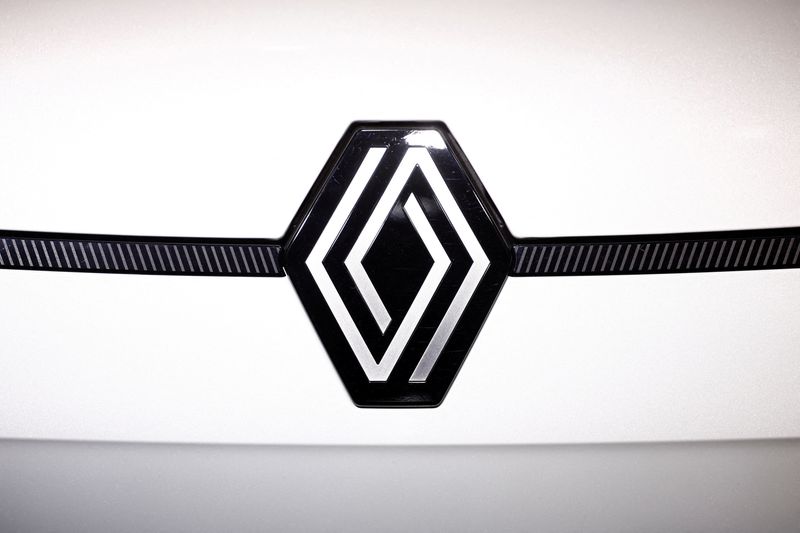Asahi shares mark weekly slide after cyberattack halts production
Investing.com -- Renault ’s (EPA:RENA) electric vehicle unit Ampere remains on track to meet its operational and financial targets, according to analysts at Jefferies following a site visit to the company’s ElectriCity facility in Douai, northern France.
The visit, hosted by CFO Vincent Piquet and Ampere’s leadership, confirmed key performance indicators remain unchanged from those presented at the November 2023 investor day.
Ampere continues to target EBIT breakeven in 2025, supported by a planned 40% cost reduction between first- and second-generation C-segment EVs, such as the Scenic, by 2027–28.
Jefferies said the bulk of this reduction will come from battery costs, which are expected to fall by 50%, in part due to lower raw material prices.
Additional cost savings include a 25% reduction in e-powertrain expenses, 25% from the vehicle platform, 15% from upper body components, and further efficiencies from manufacturing and logistics, which are expected to benefit from the brownfield nature of the site.
Ampere’s annual production capacity is 400,000 units, with a target of 620,000 by 2028.
The Douai plant currently produces a vehicle in under 10 hours and aims to match Eastern European cost levels within the year.
The company is positioning itself as a European contender in the global EV market, highlighting reduced development times and reliance on external partners.
Development of the next-generation Twingo has been cut to 21 months, down from three to four years, aided by design work at a Chinese R&D center.
Ampere aims to make two-year development cycles standard under its “Leap 100” initiative.
Battery flexibility has also improved. The company introduced lithium iron phosphate (LFP) cell chemistry alongside nickel manganese cobalt (NMC) within 18 months.
Battery suppliers include AESC (NMC), Verkor (NMC), LG Energy Solution (LFP and NMC), and CATL (LFP). Six models, including variants for Nissan (OTC:NSANY) and Mitsubishi, are now produced on the same line.
Ampere is set to launch its first software-defined vehicle in 2026: the Flexivan light commercial vehicle, developed with Volvo AB (OTC:VLVLY) and powered by Qualcomm (NASDAQ:QCOM) and Google (NASDAQ:GOOGL) software.
While the company employs 1,800 engineers in software and systems development, much of the advanced driver assistance systems are sourced from Valeo (EPA:VLOF).
Unlike competitors investing heavily in gigafactories and proprietary software, Ampere emphasizes a partnership model, which it argues reduces capital risk.
Google remains its key software partner, with Qualcomm to feature in next-generation vehicles.
Ampere’s model lineup includes the updated Dacia Spring starting at €17,000, the Twingo below €20,000, and the Renault 5, Megane, and Scenic priced at €25,000, €34,000, and €40,000, respectively.
Jefferies noted these prices are 15% to 30% below segment averages. The brokerage also cited CFO Piquet’s estimate that localizing Chinese EV production in Europe would carry a €2,000 to €3,000 cost premium, a gap Ampere believes it can close through efficiency gains. Jefferies maintains a “hold” rating on Renault stock with a €48 price target.
